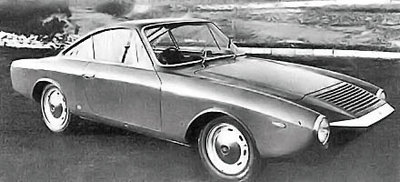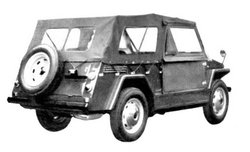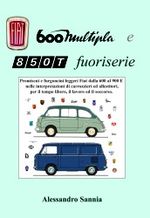Difference between revisions of "Savio"
m |
m |
||
| (29 intermediate revisions by the same user not shown) | |||
| Line 1: | Line 1: | ||
| − | + | {{X}} | |
[[Image:logo-savio.jpg|center]] | [[Image:logo-savio.jpg|center]] | ||
| + | [[Image:savio_fiat_1100A_berlina_2_porte_1947.jpg|thumb|right|250px|'''1947 Savio Fiat 1100A Berlina 2 door''' [http://www.fiatfuoriserie.it/index.htm <small>Source</small>]]] | ||
| − | + | '''Savio''' was another [[Turin]] based company mostly known for making bodies for [[Fiat]] cars, Savio was founded in 1919 by the two [[Savio]] brothers, Antonio and Giuseppe. Having learnt their trade working for Alessio, they started in [[Via Tiziano]] 38 by completing 600 bodies for Itala chassis for their previous employer. Another early project was a four door saloon built on a Ceirano chassis, the first use of the silent-bloc system. They went on to make bodies for numerous manufacturers (including [[Itala]], [[OM]], [[Isotta Fraschini]], [[Ansaldo]], [[Chiribiri]], [[Alfa Romeo]], [[Fiat]] and [[Lancia]]) as well as for other carrozzeria (including [[Garavini]], [[Farina]], [[Boneschi]] and [[Ghia]]). | |
| − | |||
After the war Antonio withdrew from the company, but Giuseppe continued alone until he passed away in 1954. At that point [[Alfredo Caracciolo]] took control, a few years later he moved the company to [[Borgo San Pietro]] di Moncalieri. In the following years the company diversified and created a prototype section, and later a special resins department. | After the war Antonio withdrew from the company, but Giuseppe continued alone until he passed away in 1954. At that point [[Alfredo Caracciolo]] took control, a few years later he moved the company to [[Borgo San Pietro]] di Moncalieri. In the following years the company diversified and created a prototype section, and later a special resins department. | ||
| Line 10: | Line 10: | ||
They became more closely connected with [[Fiat]] around this time, and produced the 1400B saloon, 1200 Sport, 2300S Coupe and 600D Polis. In 1965 they released the Fiat 600 based 'Jungla', later evolving into a 126 based model. Prototypes were also built, such as the 125 based Coupé and estate which were shown at the 1969 Turin Motorshow. Notable amongst their relatively recent products is the [[Lancia Delta]] S4, for which Savio made the body. | They became more closely connected with [[Fiat]] around this time, and produced the 1400B saloon, 1200 Sport, 2300S Coupe and 600D Polis. In 1965 they released the Fiat 600 based 'Jungla', later evolving into a 126 based model. Prototypes were also built, such as the 125 based Coupé and estate which were shown at the 1969 Turin Motorshow. Notable amongst their relatively recent products is the [[Lancia Delta]] S4, for which Savio made the body. | ||
| − | [[Image: | + | [[Image:savio_fiat_1200_coupe_1957.jpg|thumb|right|250px|'''1957 Savio Fiat 1200 Coupe''' [http://www.fiatfuoriserie.it/index.htm <small>Source</small>]]] |
| − | The company still exists today and is divided into three parts, the prototype area, making functional prototypes, the series production area, producing runs of special vehicles such as ambulances, and the resin area, undertaking research, development and production of the special materials. | + | The company still exists today and is divided into three parts, the [[prototype]] area, making functional prototypes, the series production area, producing runs of special vehicles such as ambulances, and the resin area, undertaking research, development and production of the special materials. |
| − | Savio 600 Jungla engineBased on the Fiat 600, the Jungla was a utilitarian jeep-like vehicle designed for work, not pleasure. It was first shown at the Turin Motorshow in 1965, entered production in the following year and continued to be built until 1974. In that time several thousand were built. | + | Savio 600 Jungla engineBased on the [[Fiat 600]], the Jungla was a utilitarian jeep-like vehicle designed for work, not pleasure. It was first shown at the Turin Motorshow in 1965, entered production in the following year and continued to be built until 1974. In that time several thousand were built. |
| − | + | Characterized by it's spartan fittings, it used the 600 mechanicals with little change, a rear-mounted, water-cooled 767cc engine driving the rear wheels. [[Drum brakes]] all round were hidden by wheels from the [[Fiat 1100]]. Later, when the 600 ceased production in Italy it used the similar engine from the Seat 600E from Spain. The controls were also from the 600, whilst the instrumentation was from the 500. A [[fuel]] guage was not fitted, merely a warning light for the reserve. | |
A soft-top was available, as were cloth doors (which had plastic windows). The spartanism continued to the single windscreen-wiper (drivers-side only). Interestingly, although it was produced by Savio, the project actually came from within Fiat's Engineering department. | A soft-top was available, as were cloth doors (which had plastic windows). The spartanism continued to the single windscreen-wiper (drivers-side only). Interestingly, although it was produced by Savio, the project actually came from within Fiat's Engineering department. | ||
A total of about 3200 were built. | A total of about 3200 were built. | ||
| + | |||
| + | [[Image:1600scoupe_savio2.jpg|thumb|400px|left|'''1963 Savio 1600 Scoupe''']] | ||
The 126 Jungle, released in 1975, the 126 Jungla was the spiritual successor of the above mentioned 600 Jungla, now based on the [[Fiat 126]]. The wheelbase and mechanicals remained the same as the production Fiat whilst an all new body was fitted. The latter included a fixed roll-over hoop and a folding windscreen. A complete folding-top was available. It weighed 620kg and had the following dimensions : length 3025mm, width 1385mm. | The 126 Jungle, released in 1975, the 126 Jungla was the spiritual successor of the above mentioned 600 Jungla, now based on the [[Fiat 126]]. The wheelbase and mechanicals remained the same as the production Fiat whilst an all new body was fitted. The latter included a fixed roll-over hoop and a folding windscreen. A complete folding-top was available. It weighed 620kg and had the following dimensions : length 3025mm, width 1385mm. | ||
| Line 26: | Line 28: | ||
Savio [[Fiat 850]] Coupe, this pretty little two seat spider was first shown by Savio at the 1964 Turin Motorshow. Based on the normal 850 mechanicals, it was built to order. | Savio [[Fiat 850]] Coupe, this pretty little two seat spider was first shown by Savio at the 1964 Turin Motorshow. Based on the normal 850 mechanicals, it was built to order. | ||
| − | + | ||
| + | [[Image:savio_jungla_600_1965.jpg|thumb|right|250px|'''1965 Savio ''Jungla'' 600''']] | ||
| + | |||
Using the mechanicals of the [[Fiat 124]], Savio offered a 2+2 coupe at the 1968 Turin Motorshow (below left). Standard fit included a [[Nardi]] steering-wheel, alloy wheels by [[Fergat]] and a revcounter. Along the lines of the quite successful Jungla, Savio also proposed a similar vehicle using the Fiat 124 mechanicals. Presented at the 1966 Turin Motorshow it was called the Savana. | Using the mechanicals of the [[Fiat 124]], Savio offered a 2+2 coupe at the 1968 Turin Motorshow (below left). Standard fit included a [[Nardi]] steering-wheel, alloy wheels by [[Fergat]] and a revcounter. Along the lines of the quite successful Jungla, Savio also proposed a similar vehicle using the Fiat 124 mechanicals. Presented at the 1966 Turin Motorshow it was called the Savana. | ||
| Line 37: | Line 41: | ||
Emerging in 1963, this coupe used the mechanicals of the [[Fiat 2300]] with a new bodystyle and a comprehensive level of equipment, including a leather interior, electric windows, luxurious fittings and special instrumentation. | Emerging in 1963, this coupe used the mechanicals of the [[Fiat 2300]] with a new bodystyle and a comprehensive level of equipment, including a leather interior, electric windows, luxurious fittings and special instrumentation. | ||
| − | In recent years Savio have proposed, and in some cases produced limited numbers of based on various modern cars, including the [[Fiat Panda]] and [[Fiat Uno]]. | + | In recent years Savio have proposed, and in some cases produced limited numbers of based on various modern cars, including the [[Fiat Panda]] and [[Fiat Uno]]. [http://www.carsfromitaly.net <small>Source</small>] |
| + | [[Image:savio_logo.gif|center]] | ||
| − | [[ | + | |
| + | == 1959 Torpedo Marina == | ||
| + | |||
| + | The actual name of the car is “Torpedo Marina”, that in Italian means something like “open-body for the seaside”. It was based on the chassis of the [[Fiat 600 Multipla]] and was unveiled in Fall 1956, originally designed by [[Felice Mario Boano]] and produced by his small [[Boano]] workshop. | ||
| + | |||
| + | Two years later -in 1958- Boano was hired by [[Fiat]] to establish the “Centro Stile” (styling department) and so he discontinued his job as an independent coachbuilder. The rights to produce a few models (among which the Torpedo Marina) were passed to [[Carrozzeria]] [[Savio]], that carried on the production for another couple of years. This explains why your car, that’s actually designed by [[Boano]], carries a [[Savio]] badge. | ||
| + | |||
| + | It’s very hard to say how many have been built, but I would say only a few: it was more attractive but for sure much more expensive than its biggest competitor -the Jolly by [[Ghia]]- and so it was really a niche product. 10 to 30 could be a reasonable guess. | ||
| + | |||
| + | |||
| + | [[File:600m.jpg|thumb|right|150px|[http://www.ilcammello.it/Libri/fuoriserie/FS08/fs08_i.htm '''More Info:''' <br>''Fiat 600 Multipla e 850 T fuoriserie'' book by Alessandro Sannia] ]] | ||
| + | <gallery> | ||
| + | File:fiat 002_edited-2.jpg|'''1959 Fiat Torpedo Marina''' | ||
| + | File:fiat 001_edited-1.jpg|'''There is one on display at the Metromobile Museum in Paris, one being driven by Prince Albert and Prince Ranier and this one built for Henry J. Kaiser of Kaiser Steel in private ownership in California.''' | ||
| + | File:fiat 004_edited-4.jpg | ||
| + | </gallery> | ||
| − | |||
| + | {{-}} | ||
| + | {{A-Z multipage list|Car Information and Photos by Marque|Information and Photos by Marque|}} | ||
| + | {{A-Z multipage list|Motorcycle Information and Photos by Marque|Motorcycle Information and Photos by Marque|}} | ||
{{Car Information and Photos by Marque}} | {{Car Information and Photos by Marque}} | ||
{{Motorcycle Information and Photos by Marque}} | {{Motorcycle Information and Photos by Marque}} | ||
Latest revision as of 09:26, 5 December 2010
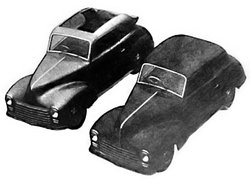
Savio was another Turin based company mostly known for making bodies for Fiat cars, Savio was founded in 1919 by the two Savio brothers, Antonio and Giuseppe. Having learnt their trade working for Alessio, they started in Via Tiziano 38 by completing 600 bodies for Itala chassis for their previous employer. Another early project was a four door saloon built on a Ceirano chassis, the first use of the silent-bloc system. They went on to make bodies for numerous manufacturers (including Itala, OM, Isotta Fraschini, Ansaldo, Chiribiri, Alfa Romeo, Fiat and Lancia) as well as for other carrozzeria (including Garavini, Farina, Boneschi and Ghia).
After the war Antonio withdrew from the company, but Giuseppe continued alone until he passed away in 1954. At that point Alfredo Caracciolo took control, a few years later he moved the company to Borgo San Pietro di Moncalieri. In the following years the company diversified and created a prototype section, and later a special resins department.
They became more closely connected with Fiat around this time, and produced the 1400B saloon, 1200 Sport, 2300S Coupe and 600D Polis. In 1965 they released the Fiat 600 based 'Jungla', later evolving into a 126 based model. Prototypes were also built, such as the 125 based Coupé and estate which were shown at the 1969 Turin Motorshow. Notable amongst their relatively recent products is the Lancia Delta S4, for which Savio made the body.
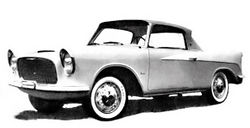
The company still exists today and is divided into three parts, the prototype area, making functional prototypes, the series production area, producing runs of special vehicles such as ambulances, and the resin area, undertaking research, development and production of the special materials.
Savio 600 Jungla engineBased on the Fiat 600, the Jungla was a utilitarian jeep-like vehicle designed for work, not pleasure. It was first shown at the Turin Motorshow in 1965, entered production in the following year and continued to be built until 1974. In that time several thousand were built.
Characterized by it's spartan fittings, it used the 600 mechanicals with little change, a rear-mounted, water-cooled 767cc engine driving the rear wheels. Drum brakes all round were hidden by wheels from the Fiat 1100. Later, when the 600 ceased production in Italy it used the similar engine from the Seat 600E from Spain. The controls were also from the 600, whilst the instrumentation was from the 500. A fuel guage was not fitted, merely a warning light for the reserve.
A soft-top was available, as were cloth doors (which had plastic windows). The spartanism continued to the single windscreen-wiper (drivers-side only). Interestingly, although it was produced by Savio, the project actually came from within Fiat's Engineering department. A total of about 3200 were built.
The 126 Jungle, released in 1975, the 126 Jungla was the spiritual successor of the above mentioned 600 Jungla, now based on the Fiat 126. The wheelbase and mechanicals remained the same as the production Fiat whilst an all new body was fitted. The latter included a fixed roll-over hoop and a folding windscreen. A complete folding-top was available. It weighed 620kg and had the following dimensions : length 3025mm, width 1385mm.
The Turin Motorshow of 1968 saw a new 'off-roader' displayed by Savio featuring wicker seats and a nose-mounted spare-wheel. Based on the mechanicals of the Fiat 500 it had a total length of only 3000mm and weighed a mere 490kg. Low volume production was undertaken.
Savio Fiat 850 Coupe, this pretty little two seat spider was first shown by Savio at the 1964 Turin Motorshow. Based on the normal 850 mechanicals, it was built to order.
Using the mechanicals of the Fiat 124, Savio offered a 2+2 coupe at the 1968 Turin Motorshow (below left). Standard fit included a Nardi steering-wheel, alloy wheels by Fergat and a revcounter. Along the lines of the quite successful Jungla, Savio also proposed a similar vehicle using the Fiat 124 mechanicals. Presented at the 1966 Turin Motorshow it was called the Savana.
The Turin Motorshow of 1967 saw Savio displaying a 2+2 coupe based on the Fiat 125. At the same show one year later Savio constructed a type of sporting-estate or hatchback on the same mechanicals.
At the 1969 Turin Motorshow Savio showed a coupé based on the Fiat 128. A 2+2 with alloy wheels it also featured a hand stitched fake-leather interior and Fiat 124 Sport instruments.
In 1963 Savio proposed a coupe based on the 1600S. The 1964 Turin Motorshow saw another strange coupe on the Savio stand. Again based on the 1600S mechanicals it was offered for sale.
Emerging in 1963, this coupe used the mechanicals of the Fiat 2300 with a new bodystyle and a comprehensive level of equipment, including a leather interior, electric windows, luxurious fittings and special instrumentation.
In recent years Savio have proposed, and in some cases produced limited numbers of based on various modern cars, including the Fiat Panda and Fiat Uno. Source
1959 Torpedo Marina
The actual name of the car is “Torpedo Marina”, that in Italian means something like “open-body for the seaside”. It was based on the chassis of the Fiat 600 Multipla and was unveiled in Fall 1956, originally designed by Felice Mario Boano and produced by his small Boano workshop.
Two years later -in 1958- Boano was hired by Fiat to establish the “Centro Stile” (styling department) and so he discontinued his job as an independent coachbuilder. The rights to produce a few models (among which the Torpedo Marina) were passed to Carrozzeria Savio, that carried on the production for another couple of years. This explains why your car, that’s actually designed by Boano, carries a Savio badge.
It’s very hard to say how many have been built, but I would say only a few: it was more attractive but for sure much more expensive than its biggest competitor -the Jolly by Ghia- and so it was really a niche product. 10 to 30 could be a reasonable guess.
| Car Information and Photos by Marque: A - B - C - D - E - F - G - H - I - J - K - L - M - N - O - P - Q - R - S - T - U - V - W - X - Y - Z |
| Motorcycle Information and Photos by Marque: A - B - C - D - E - F - G - H - I - J - K - L - M - N - O - P - Q - R - S - T - U - V - W - X - Y - Z |

